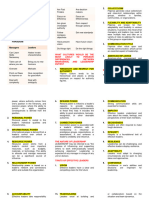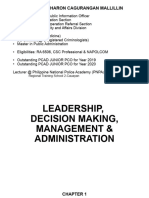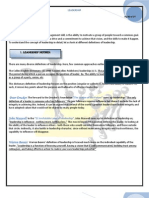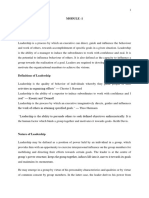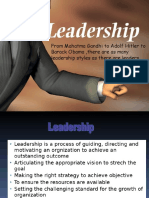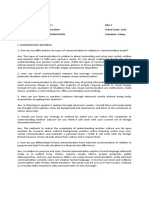0% found this document useful (0 votes)
16 views9 pagesPresenta
The document discusses the concept and importance of leadership, emphasizing the skills required for effective leadership and the various contemporary leadership styles. It highlights the role of leaders in motivating and guiding teams, as well as the significance of power and influence in leadership. Additionally, it addresses the necessity of leading positive change through clear vision and effective communication.
Uploaded by
monzonvega35Copyright
© © All Rights Reserved
We take content rights seriously. If you suspect this is your content, claim it here.
Available Formats
Download as PDF, TXT or read online on Scribd
0% found this document useful (0 votes)
16 views9 pagesPresenta
The document discusses the concept and importance of leadership, emphasizing the skills required for effective leadership and the various contemporary leadership styles. It highlights the role of leaders in motivating and guiding teams, as well as the significance of power and influence in leadership. Additionally, it addresses the necessity of leading positive change through clear vision and effective communication.
Uploaded by
monzonvega35Copyright
© © All Rights Reserved
We take content rights seriously. If you suspect this is your content, claim it here.
Available Formats
Download as PDF, TXT or read online on Scribd
/ 9











